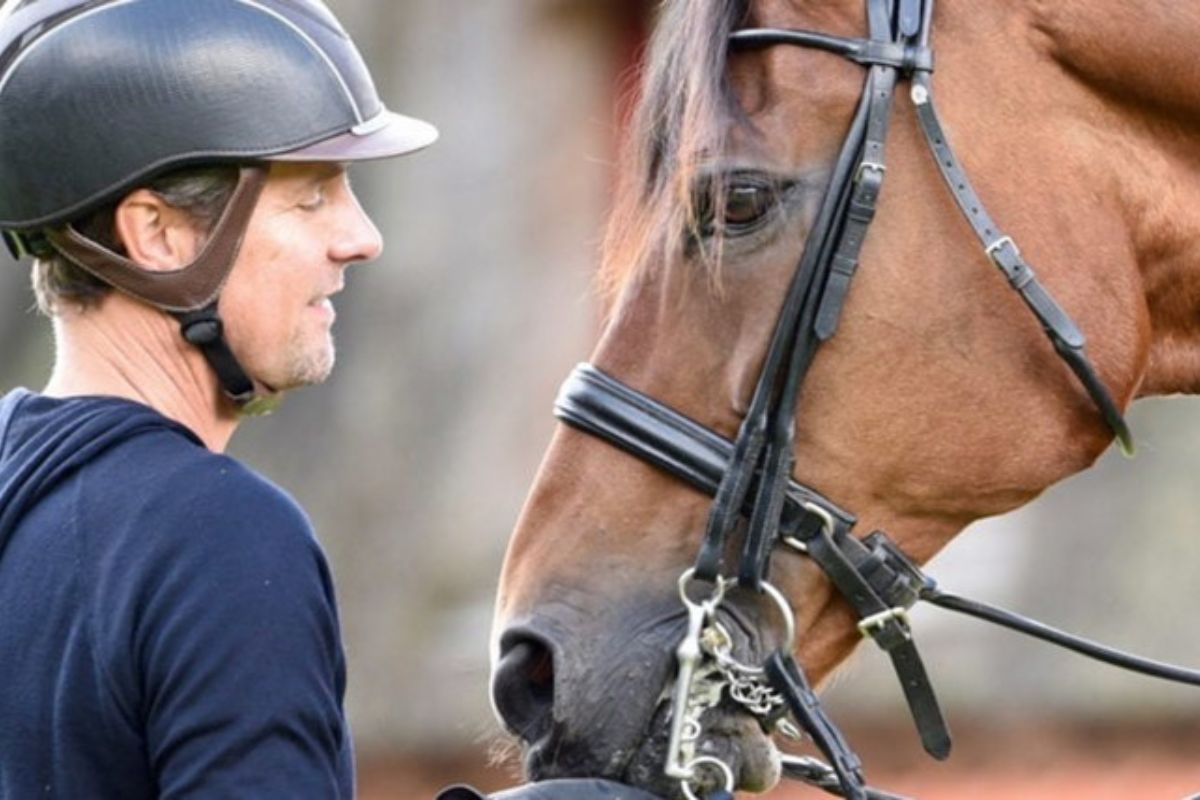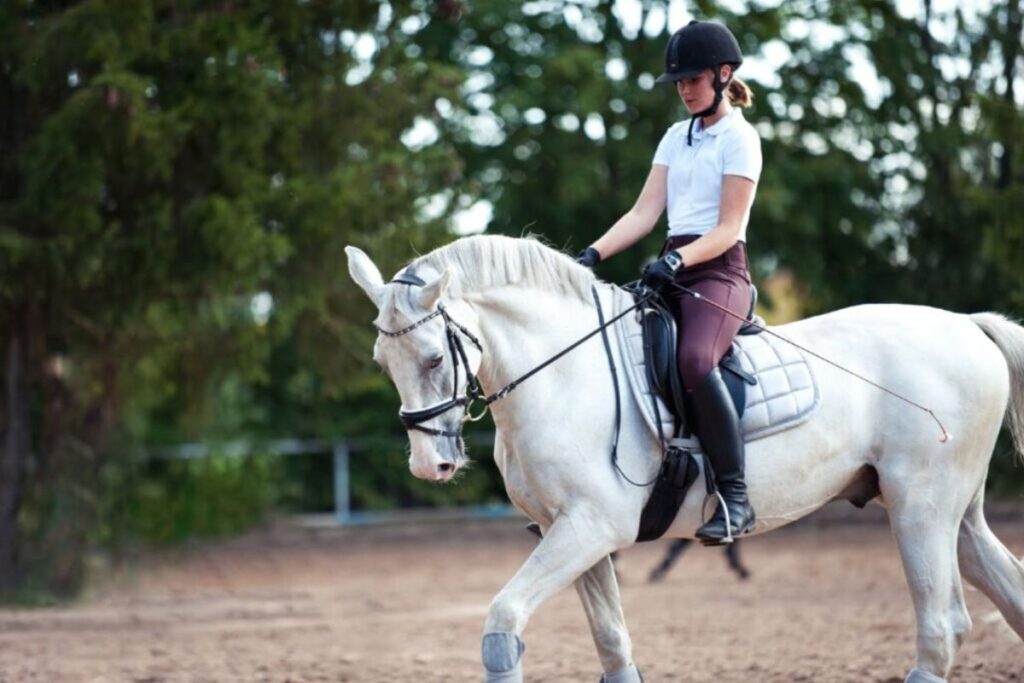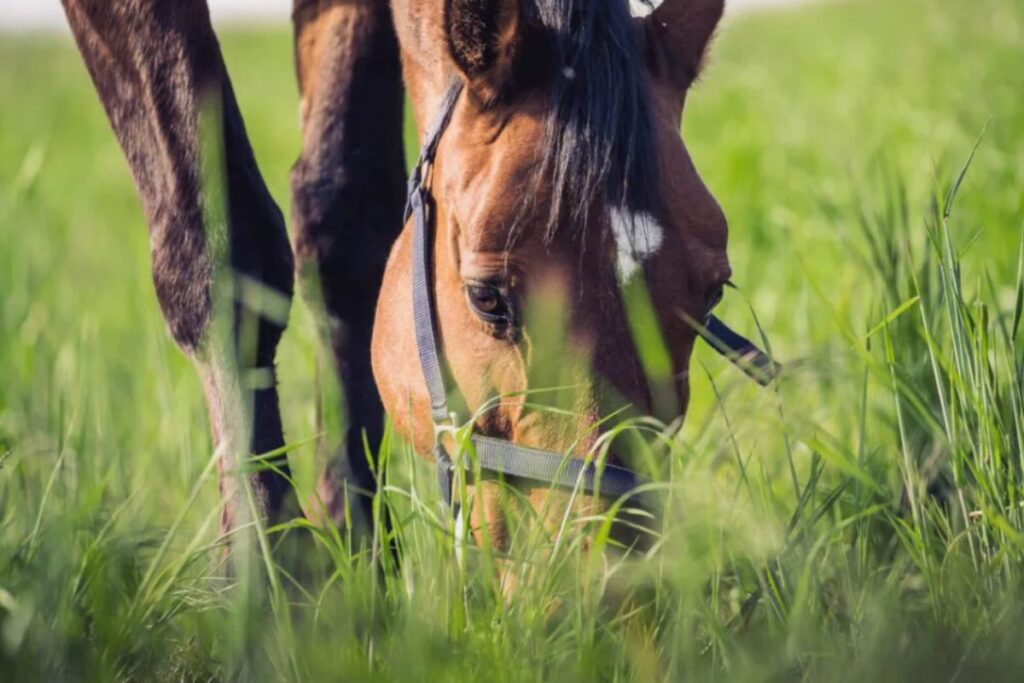Menu

Meet a true advocate for horses - Claus Toftgaard. New impulses are constantly emerging in equestrian sports. Impulses that are born out of a need for horses with bigger gait capacity: Horses that can deliver greater performance and financial profit. One of equestrian sports's most prominent advocates for good equestrian welfare is Claus Toftgaard. We have met him to talk about the issues of modern riding and our responsibilities as riders. Claus believes that far too many riding horses are being put down due to improper riding and training.
You may also like to read: Veterinarian: Creating a strong and durable horse – 3 things to focus on
Claus Toftgaard has never doubted that horses should be the key point of his life. The dream was to become a horseback instructor, but a back injury during his education completely knocked him off course and put an end to his further progress in that direction. But even though life took a turn for him, he managed to turn the negative into something positive. Claus trained as a trainer and as a human and equine physiotherapist. A choice he has never regretted. With this education, Claus focuses on one single goal: To improve the welfare of Danish riding horses.
Claus Toftgaard is a man with much at heart. And he really wants to pass on his knowledge. We asked him what kind of problems he sees most dominantly in modern riding horses. And here the answer is clear.
“I meet way too many horses with a crick in their neck. They get it from the way we train and ride them,” he explains and continues to point out that we must remember that the horse's neck and head are a unified balance bar.
"If the horse has problems in these areas, congestion in the tendons and joints can occur. This causes it to get tensed and compensate elsewhere in the body.”
Lots of horses, according to Claus Toftgaard, are not able to turn their necks and pose correctly in the jowl when we ride them. Instead, they rotate throughout the body because they are locked in the neck. This lock propagates to the rest of the body. This causes our horses to walk around with chronic pain, which can often be seen in the horse's expression in and around the eyes as an "equine pain face".
You may also like to read: Equine pain face: How to spot if your horse is in pain
Many horses' neck strains are due to incorrect riding. Claus Toftgaard often finds that even top-level riders with a skilled and competent coaching team are not aware that the horse is locked in this area. Claus sees this as an expression of a lack of knowledge about the horse's biomechanics in the sport. Combined with the fact that far too many riders are taught by riders and trainers who are not skilled enough to spot horses with locks in the body. In other words, we learn that as long as the horse is on the bit, and walks in front of the helpers, everything is ok.
“Some riders are almost anxious for their horse to go of the bit and raises its head during training. That things just suddenly do not look nice or that they lose control for a short time. That is why we learn to have too much contact with the horse's mouth,” says Claus.
He believes that some riders tend to have too much grip on the horse in front without them actually being aware of it. It's something we've learned since we were beginners. That causes a lot of unintentional manipulation of the horse's mouth, neck and jaw. And we think that's how riding should be because that's how we learn it from our coaches.

It is a problem that we basically learn to ride the horse with too much contact on the rein and that we learn to ride the horse in collected gaits to soon. The result is that the horse will walk in a very narrow frame in front, which up to 90% of horses can not deal with at all, Claus believes. We mistakenly believe that our horses are relaxed and lose, but once we get a proper look at them, the picture shows something else.
They get pain in the body because their chest, the lower part of the neck and not least the muscles around the sternum, are not trained for it. The horse may put its head down, but it still stretches and still does not lift the lower part of the neck and chest.
The same is seen in many horses that are locked in the seventh cervical vertebra and the first thoracic vertebra. From there, the nerves run to the shoulders and front legs. Horses have no collarbones, therefore the shoulders hang in muscles, tendons and connective tissue (also called fascia). All of which are subject to very negative manipulation if the horse is ridden incorrectly.
“We have to learn to train our horses right from the very beginning. Learn that the loosening work is the foundation of all good riding. Too many horses are doing circus like gaits because people do not know better. They learn from their trainer and the judging at dressage competitions that this is how good riding should look like."
"Previously we had to spend a lot of energy on pushing the gaits today we have to work on taking the time to not push"
Claus Toftgaard
We asked Claus Toftgaard about what he sees as the biggest difference in equestrian sports from 10 years ago and up till today. If we look back at riding 10-20 years ago, according to Claus, there has been a huge development in i.a. the breeding. Today we have got much more athletic horses. We've gone from a Fiat to a Ferrari. The problem is that we lack the drivers license to be able to operate that much power. This is something Claus believes is a problem for many riders.
“Modern horses are very sensitive gait machines. Where before we had to spend a lot of energy riding the horses, today we have to work to get the gait out of them, because many of them simply do not get the time it takes to build their body," Claus notes.
It is this new type of horse that many people have problems with today. Very often they are hypermobile in their joints, which gives great looking gaits with high knee lifts and deep backs. We have problems dealing with the large gaits. It does not work when we train and ride them as we did before. It is important that we are better equipped to handle good and sensible training of this type of horse. That we do not let ourselves be blinded by the fact that it has to look amazing.
In other words, we need to spend a lot more time on basic riding and only use the big ‘gait gear’ when we are far enough in the horse’s training for them to carry it. Claus thinks we need to ask ourselves if this is good for the horses. Having such great gaits requires that we ride with reason and not vanity. This is also why Claus himself has in many ways opted to stay out of competitions. He could not vouch for the way dressage horses are judged and trained.
“Too many horses are being put down due to incorrect training and riding. We have to work on the details and the training if modern dressage is to find a balance. A place where the horse can have a dignified life, and I want to participate,” he says.

One of Claus' great role models is the Olympic gold medalist Carl Hester. Claus himself has had the pleasure of riding with Carl. An experience he describes as one of the most educational periods in his life as a rider. What Claus likes about Carl's training philosophy is his ability to take his horses to another level and combine it with horsemanship.
Carl was i.a. helped start to believe that you can ride dressage at a high level without abusing the horse. It has been a personal journey for me. I believe that you can have a good partnership with your horse and ride at a high level without using inappropriate methods,” says Claus.
"In fact, as riders, we should constantly ask ourselves whether we have a fair cooperation with the horse"
Claus Toftgaard
If it was up to Claus, we would take a closer look at the training methods and breeding of hypermobile horses. And at the same time, judging in the dressage world should also put more focus on the fact that the horses at the competitions are relaxed and ‘happy’ athletes. The challange is that the judges do not judge by any of those criterias. If it was up to Claus, the dressage judges would see the horse without a saddle after the test. Thereby being able to do a real assessment of whether the horse has been trained correctly.
About this, Claus says: “Then the saddle should be off, because the most important part of a dressage ride is hidden under the saddle. It is so revealing whether the horse is built correctly in relation to what we ask of it.”
You can check for yourself if your horse's muscles are symmetrical. If you stand behind it and look over its back, you can see if there is symmetry in its muscles. In addition, the shoulder blades should be equally high, otherwise there are imbalances in the training. In addition, the horse's muscles must appear smooth and even on both sides. There must be no dents or swelling anywhere.
You can also check the condition of the pelvis when the horse is standing straight. Then the pelvis should also be straight. Last but not least - you also get a good indication of whether your horse has tension in the back, by running a soft thumb along the spine. If the horse gives in alot along the way, it may be due to locks or soreness in the back, says Claus Toftgaard.
“In reality, we as riders should constantly ask ourselves the question of whether we have a fair collaboration with the horse. I think we lack humility in relation to our horses," says Claus. We have so much to thank the horses for. Both the horses in the sport and the horses used for therapy and disability riding and all other forms of togetherness deserve that we treat them with respect, patience and humility. Long live the horses.
To learn more about Claus Toftgaard go to claustoftgaard.dk/en/